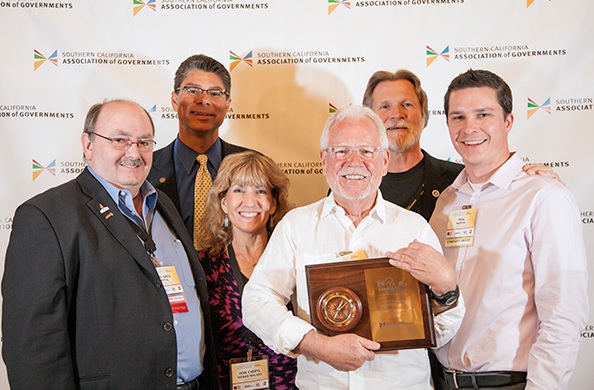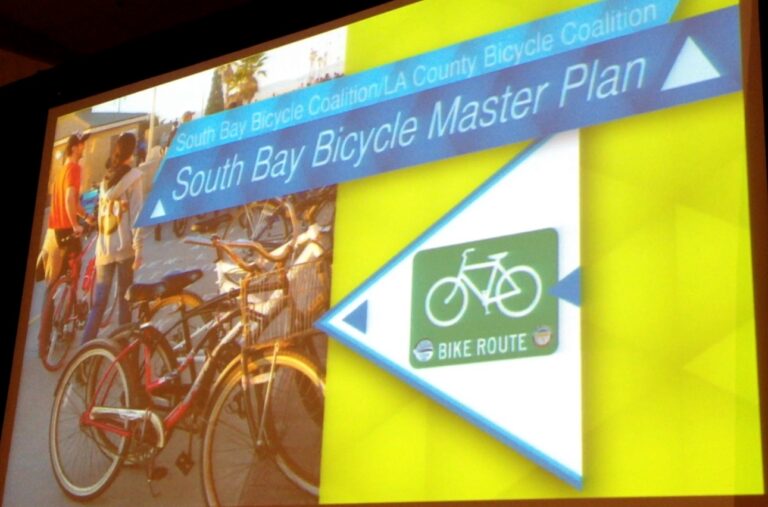The South Bay Bicycle Master Plan was a two-year initiative, which included 16 workshops that culminated in this master plan. (See “History of the South Bay Bicycle Master Plan (BMP)” below on this page.)
In 2012, after many community input meetings from the residents and cycling community, the cities of El Segundo, Gardena, Hermosa Beach, Lawndale, Manhattan Beach, Redondo Beach and Torrance adopted the South Bay Bicycle Master Plan. The plan outlines over 200-miles of a regional bicycle network and proposes a series of interconnected bikeways, bike parking facilities and associated programs and policies throughout seven cities in the South Bay.
This initiative is a result of an innovative partnership between Los Angeles County Bicycle Coalition (LACBC) and the South Bay Bicycle Coalition (SBBC) and supportive efforts from the seven participating cities. It is made possible by funding from the Department of Health and Human Services through the Los Angeles County Department of Public Health.
Making our streets more bike-friendly benefits all users of the road. The statistics below are just a few examples of how we can all benefit from more a more bikeable community.
The SBBC Master Plan of August 2011:
[Download the complete SBBC Master Plan (164 MB)]
Additional Master Plans:


Funding made possible from the Department of Health and Human Service through the Los Angeles County Department of Public Health.